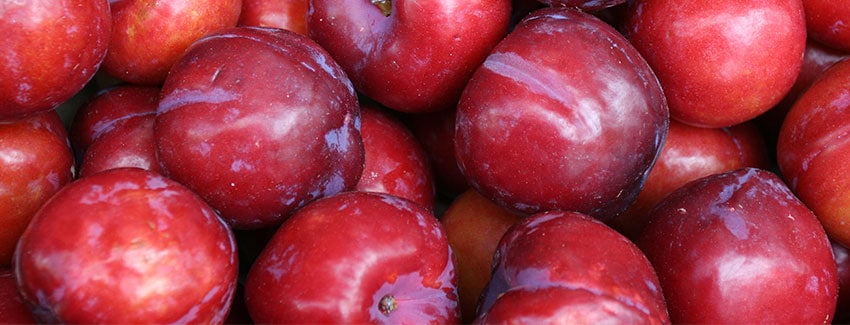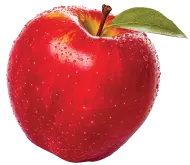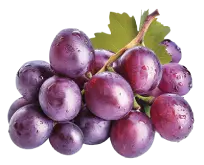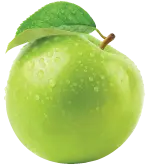
Plums are the fruiting bodies from plants that belong to the subgenus Prunus (1). They have a smooth pit and a groove running down one side of the fruit. Plums have been cultivated all over the world since prehistoric times. Like other fruits such as apples, plums are available in many different varieties. The earliest known plums are believed to have originated in China around 470 BC with introduction to Europe of these same fruits around 500 years later. Additional geographical isolations have yielded the South Asian Cherry Plum and a number of American Plums (2).
Plums can be broadly divided into three groups within the subgenus based on variations in how they flower:
- Prunus – or Old-World Plums which include such varieties as Damson, Japanese, Italian and Sloe or Blackthorne plums.
- Prunocerasus – or New World Plums which include a number of varieties native to North and Central America.
- Armenica – Which includes the apricot, Chinese Plum and Siberian apricot. (1, 4)
Today China is the leading harvester of plums, followed by the E.U., Romania, Serbia and the United States. Within the US, major production of plums happens in California (1). Advances in breeding methods and the number of cultivations has yielded many improvements in plums including
disease resistance, drought or frost tolerance, extended growing seasons and everyone’s favorite reasons – sweetness and flavor. By cross breeding varietals, nurseries have been able to supply hardy plants that will yield better tasting fruits year after year without genetic modification.
When plant varietals are interbred at the nursery, we end up with interspecific hybrid species. Such is the case with a wide variety of plum fruits that have come to be labeled Interspecific Plums
(IS Plums). These include hybrid crosses within the Prunus subgenus that have the outward appearance of a plum. We have heard them called plumcots, apriums, apriplums and Pluot®. These names can include any number of hybrid crosses between Prunus species. It is commonly stated that the Pluot®, developed and trademarked by Floyd Zaiger, is a cross between Old World and Armenica species with approximately 25% of
the parentage being Prunus armeniaca (apricot or Armenian Plum) (5, 7); however, testing to date has shown no distinct genetic alleles that can be identified as coming directly from Prunus armeniaca within the Pluot® (3).
The USDA states the visual grade standard for any fruit marked as Pluot® or IS Plum will be plum as long as the outward appearance of the fruit is similar to that of a plum (6). It is a misconception
that Pluot® are not plums. Pluot® are hybrids fruits that come from trees that belong fully to subgenus Prunus and are therefore plums. To provide transparency for our customers on this subject,
we are now listing ingredients as “Plum and/or IS Plum” in items that contain plum ingredients to reflect the similar handling and classification of the hybrid and heritage varieties that we process.
Plums contain an assortment of healthy components, vitamins, and minerals. According to USDA National Nutrient Database, they are an excellent source of vitamins such as vitamin A, vitamin C (ascorbic acid), folate, and vitamin K (phylloquinone). They are also a good source of vitamin B1 (thiamine), B2 (riboflavin), B3 (niacin), B-6, and vitamin E (alpha-tocopherol). The minerals present in them include potassium, fluoride, phosphorus, magnesium, iron, calcium, and zinc. They also supply dietary fiber and offer very low calories without any harmful fats.
For the complete technical bulletin, download PDF.
1) Wikipedia contributors. (2019, February 21). Plum. In Wikipedia, The Free Encyclopedia. Retrieved 21:01, March 1, 2019, from https://en.wikipedia.org/w/index. php?title=Plum&oldid=884342469 2) Birwal P, Deshmukh G, Saurabh SP, et al. Plums: A Brief Introduction. J Food Nutr Popul Health. 2017, 1:1, March 16, 2017 http://www.imedpub.com/articles/plums-a-brief- introduction.pdf 3) Ahmad, Riaz & Potter, Daniel & Southwick, Stephen. (2004). Identi®cation and characterization of plum and pluot cultivars by microsatellite markers. Journal of Horticultural Science and Biotechnology. 79. 164-169. 10.1080/14620316.2004.11511743. 4) Shi, Shuo & Li, Jinlu & Jiahui, Sun & Yu, Jing & Zhou, Shiliang. (2013). Phylogeny and Classification of Prunus sensu lato (Rosaceae). Journal of integrative plant biology. 55. 10.1111/jipb.12095. 5) Brantley, Chip (2009-08-19). “Plu-What? What’s the difference between pluots and plumcots”. Slate. 6) USDA Fruit and Vegetable Program. (May 2004). Plums and Prunes: Shipping Point and Market Inspection Instructions. 7) Wikipedia contributors. (2018, October 21). Prunus armeniaca. In Wikipedia, The Free Encyclopedia. Retrieved 16:16, March 4, 2019, from https://en.wikipedia.org/w/ index.php?title=Prunus_armeniaca&oldid=865003750




